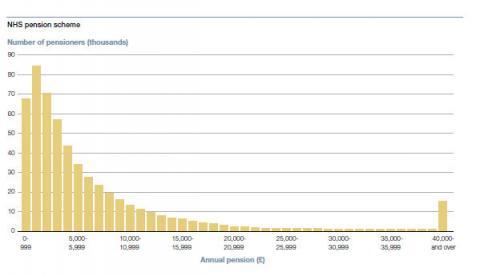Are NHS pension figures 'skewed'?
"Unite, the health union, was peddling the line that 'a typical pension in the NHS is about £4,000' — while making no mention of the fact this skewed figure includes support for people who worked part-time or for as little as six months.
Daily Mail, 11 May 2012
Yesterday's industrial action over pension reforms was described as a "flop" in some of this morning's papers, a claim we've looked at in detail here.
However are the Unions right to claim that public sector pensions are not as 'gold-plated' as it is often claimed?
That was put to listeners to the Today programme yesterday by Assistant General Secretary of the Unite union, Gail Cartmel - who also noted that the average NHS pension is just £4,000.
Today the Daily Mail argued in its leader that this figure is 'skewed' by part-time and short term workers. So what are the facts?
Is the 'average' NHS pension £4,000?
The idea that the 'average' NHS pension is just £4,000 isn't undisputed.
When the National Audit Office looked at the issue back in 2010 they put the average some way higher, at nearly £7,000.
So is it wrong to say, as the Unite Assistant General Secretary did, that the average is just £4,000?
Not necessarily. It all depends upon which 'average' you use.
If we look instead at the median NHS pension, then the figure is much lower, coming in at £4,087. This is because, as the graph below from the NAO report demonstrates, there are a large number of pensions at the lower end of the scale (as well as a significant number of very well-off pensioners).

Is the figure 'skewed'?
As the NHS Pension Scheme itself makes clear, the Mail is right to say that the figures will include part-time staff and those that were only employed temporarily.
Pension contributions for part-time staff are accrued in line with the amount of time they spend working in the health service.
However the extent to which this 'skews' the average figures is contentious.
According to NHS workforce data, the proportion of staff who are working in a part-time capacity is relatively low.
Furthermore, pension take-up among this group may also be below the rate for full-time staff. A House of Commons research paper released earlier this week on public sector pensions noted that the 2005 'Public Service Pension Scheme Framework Agreement' proposed:
"New schemes should be designed with the objective of increasing appropriate take-up especially amongst part-time and lower paid workers and others who are eligible but where participation in the scheme may be lower currently."
The Unions have themselves claimed in the past that many of the lower paid jobs previously in the public sector have been contracted out to the private sector, which they claim could 'skew' the figures in the opposite direction.
Concluision
There are a number of ways the average NHS pension can be measured, and the median figure of £4,000 is a legitimate way of looking at the data, as is the mean figure, which is some £3,000 higher.
While the Mail is correct to point out the caveats that apply to Unite's claim, it is more difficult to be certain the extent to which this 'skews' the true picture by underestimating the 'typical' pension, and arguments can be made to the contrary.